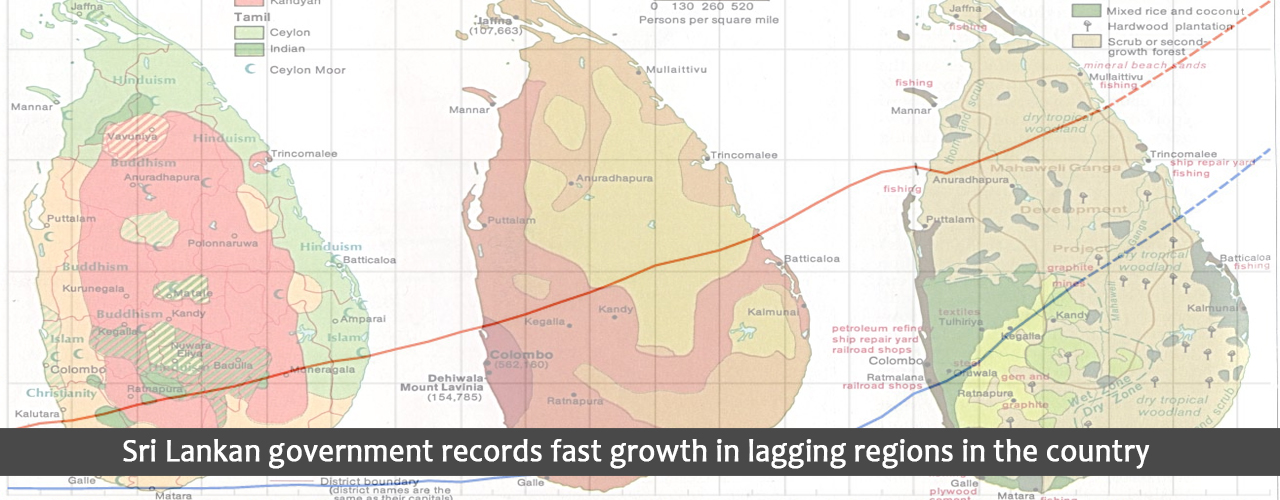Sri Lankan government records fast growth in lagging regions in the country
Official data of the Sri Lankan government has indicated that lagging regions in the country have grown faster than the most populated Western Province in 2016.
Data has also revealed that the former war-torn areas were expanding its economic output.
A report in a business website notes a breakdown of gross domestic product growth shows that Uva province, a relatively poor province grew 12.4 percent increasing its share of total GDP to 5.9 percent from 5.8 percent.
Uva had increased its share of industry to 27.4 percent from 25.4 percent, while agriculture fell to 13.1 percent from 14.7 percent, the report notes.
It further highlights that the Western province, which is most open the world, grew at 7.6 percent, up from only 1.6 percent a year earlier. Its share fell to 39.7 percent from 3.9.9 percent in 2015.
Economists had reportedly warned that Sri Lanka’s economy had become less open over the last decade.
Sri Lanka’s Northern province, a former war zone, has grown by 9.5 percent, a decline from 11.1 percent, increasing its output share to 4.2 percent.
After the Western province, the North Western province has produced the second highest output of 10.7 percent, which is an increase from 10.6 percent.
The Eastern Province, a former war zone has recorded a growth of 8.9 percent, making marginal gains.
There are strong attempts by interventionists to stop the growth in the North Western province by halting the deployment t of former coconut land to more productive uses.
There are also other regulations preventing the growth of lagging regions, including regulations preventing land from being switched to cash crops.
OSL take:
The official data indicating the growth recorded in the lagging regions signals the opportunities for investments and other economic activities that have expanding to regions other than the highly populated and economically active Western Province.
| Article Code : | VBS/AT/01112017/Z_3 |

